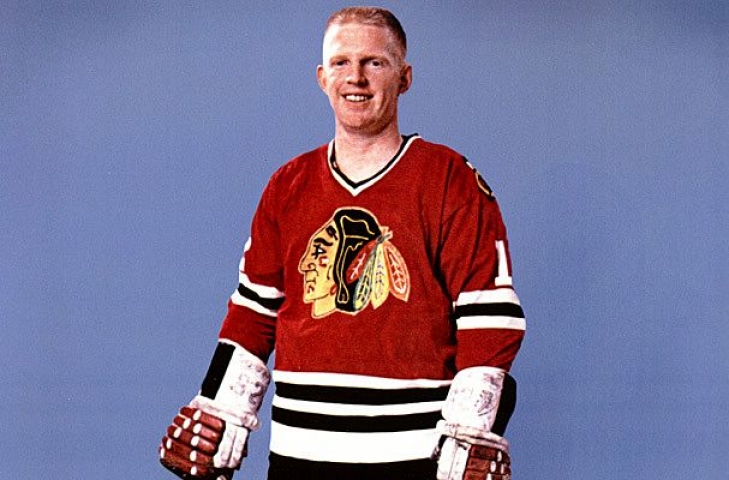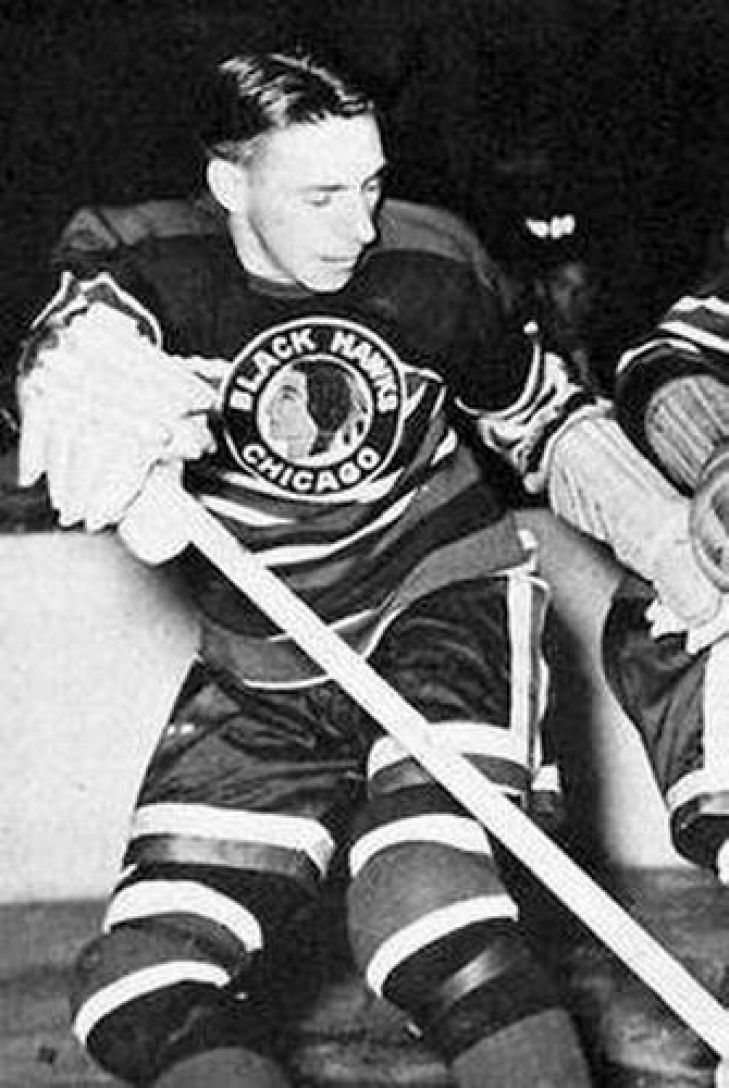25. Pit Martin
While Pit Martin was on the other side of what would be a lopsided trade (against Chicago) that saw Phil Esposito and Ken Hodge go to Boston, this should not demean what he did accomplish in the Windy City.
24. Pat Stapleton
Before he was a Chicago Blackhawk, Pat Stapleton was a Toronto Maple Leaf for all of one day as he was left unprotected after being traded from the Boston Bruins. Had the Bruins knew what Stapleton was going to accomplish in Chi-Town they likely never would have traded him and Leafs would never have left him unprotected.
23. Kenny Wharram
Kenny Wharram was with the Chicago Blackhawks for his entire NHL career, which would last 14 seasons and 766 Games. Early, he would assist Chicago win the 1961 Stanley cup but realistically he blossomed a little later in his career and his first really good season in the NHL took place when he was 30, where he would be a Second Team All Star, A Lady Byng Trophy winner and lead the league in Power Play Goals and Shooting Percentage. He was sixth in Points that year with a career high 71 Points. Wharram would have two more 60 Point seasons finishing fourth and ninth respectively, the first of which was his second Second Team All Star campaign.
22. Paul Thompson
Paul Thompson would win a Stanley Cup with the New York Rangers in 1928 but he after he was traded to Chicago prior to the 1931-32 Season he would go on the best run of his playing career.
20. Brent Seabrook
Brent Seabrook played all 1,114 of his NHL Games with the Chicago Blackhawks, where he provided leadership, solid defense, and offensive rushes when needed. Seabrook was an Alternate Captain but it was not that long ago that he was part of a youth movement that would bring the Blackhawks their first Stanley Cup in decades with their win in 2010. That year was pretty special for the Defenseman, as he would help Canada win the Olympic Gold Medal.
14. Steve Larmer
With the exception of his last two seasons (which were with the New York Rangers), Steve Larmer was a Chicago Blackhawk throughout his professional career. A later round pick in the 1980 Draft, Larmer proved to be a pleasant surprise as he would provide Chicago with 674 Points and would make two All Star appearances after being named the Calder Trophy winner in 1983. His best season was in 1990-91 where he scored 101 Points and finished fifth in Hart Trophy voting and third in the tally for the Frank J. Selke Trophy.
19. Max Bentley
Max Bentley was not supposed to play in the NHL as the native of Saskatchewan was told by the Montreal Canadiens (who had his rights) that a heart condition would prevent him from being a professional hockey player.
As you can see, the Habs physician was wrong.
18. Jeremy Roenick
Jeremy Roenick made a claim as one of the greatest American born forwards in hockey history and luckily for the Chicago Blackhawks it was there where he was the most productive.
17. Johnny Gottselig
16. Bill Mosienko
Bill Mosienko would make a relatively quick debut into the National Hockey League at the age of 20 in the 1941-42 season as the events of World War II would deplete the rosters of the premier league of Hockey. Dubbed “Wee Willie” due to his short stature, Mosienko would blossom in the 1943-44 season with a 70 Point season and the season after would see him paired with the Bentley brothers to form the “Pony Line” a moniker derived from all three of the players being a little vertically challenged. The trio would become one of the best lines in the NHL, and Mosienko would benefit with a pair of Second Team All Star Selections (1945 & 1946).
11. Doug Wilson
The top blueliner for well over a decade for the Blackhawks, Doug Wilson was the Norris Trophy winner in the 1981-82 season where he was also a First Team All-Star. Wilson would also be named a Second Team All-Star twice and was also an All-Star for the Blackhawks six times. The Defenceman would score 779 Points with a .84 PPG for the Chicago and he would twice receive votes for the Hart Trophy.
10. Earl Seibert
Earl Seibert may never have won the Norris Trophy as the National Hockey League’s top Defenseman, but look at the consecutive string of All-NHL Selections he had!
9. Doug Bentley
If you were to ask Art Ross after he first met Doug Bentley, he would have told you that both he and his brother Max would never have made the NHL let alone the Hockey Hall of Fame but Boston’s loss would become Chicago’s gain as the Bentleys were signed to the Blackhawks.
7. Tony Esposito
When you are the brother of the Phil Esposito it is easy to stay in a shadow. While it didn’t hurt that Tony was a Goalie, there was no doubt that the younger Esposito carved his own career and when it was all said and done he wasn’t Phil’s younger brother.
6. Pierre Pilote
What bothers us quite a bit is how Pierre Pilote has become a forgotten legend among the even some of the Chicago Blackhawks faithful. Now granted he played with Stan Mikita, Bobby Hull and Glenn Hall but this is a player who for many was regarded as the first blueliner to adapt to a two way game, which makes him not only a top Chicago Blackhawk but one of the most influential players in the game of hockey.
4. Glenn Hall
Glenn Hall is one of the greatest Goaltenders of all time and it was in the Windy City where he proved himself to be among the elite not only of his era but forever.
3. Patrick Kane
This was really hard for us.
While there should be absolutely no doubt that Patrick Kane should be among the top ten of the Chicago Blackhawks, are we incorrect at putting him at #3?
21. Bob Murray
Bob Murray is one of the few players who played all of his 1,000 plus Games in the National Hockey League with one team, which obviously for this list were the Chicago Blackhawks. The Defenceman would be named to two All Star Games where he would average roughly a half-point per game as an NHL Player.
2. Bobby Hull
While we made the decision to go with Stan Mikita as the greatest Chicago Blackhawk of all-time, we don’t actually think that he was the most dynamic player and dare we say necessarily the best.
In their respective primes, we would argue that the “Golden Jet” was actually the better player, and certainly the most dynamic, but Mikita’s longevity with the organization would make him more synonymous with the Blackhawks, but Hull was the bigger star.
15. Ed Belfour
If you asked hockey scouts when they saw Ed Belfour at the age of 18, none of them would have pegged Ed Belfour as a future Hall of Famer. That may very well have been the case for his next four years. Belfour went undrafted and he would sign with the University of North Dakota where he took them to a Frozen Four win and in that time he was signed by the Blackhawks, though we doubt that even they knew what was to come.





















